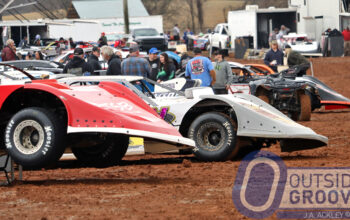These days no name is off limits for parents of newborn children. Anything’s possible. “John” and “Jane” — that’s so yesterday. Let your grandpa and grandma use them. For those of us who may have those traditional names on our licenses, let us hide behind our middle name or a different name altogether. Or, better yet, initials. But, I digress.
Anyway, in racing, names of divisions rarely change with the times. I’m not suggesting naming a class something more deck for hipsters, such as the radsters or the vintage velociraptors or the povo cars. But, maybe, we need to consider how the uninitiated to this sport respond to what we call these classes.
Modified Moniker
Years ago I sat in the stands of a Wednesday-night special and I struck up a conversation with a fan. The fan only visited the speedway for demolition derby events on Sundays. This night was their first oval-track race as they worked Saturdays, when the speedway typically holds races on the oval. As the cars hit the track, the fan looked perplexed.
“What’s a modified?” he asked.
“Well … umm …” I stuttered.
I thought to myself, that’s a great question. How do you describe a modified to a newbie?
“What’s modified on the car?” he said, throwing a one-two punch of surprisingly hard-hitting questions.
“Everything.” I quickly quipped.
I know. That wasn’t a great answer. However, how do you explain the division’s name without delivering a history lesson? The guy didn’t come to the races for a lecture. He came for edge-of-your-seat thrills.
Sexy Late Models
When I first started in this sport, I worked on a pavement late model team. Our friendly arch-rival driver came over, as he did every race, to say hello and joke around before the feature.
“Hey, you’re not going to believe this,” he said. “As you know, my email address has the word late model in it. Well, a modeling agency saw my email address and reached out to me. They think I’m an older fashion model! I may have a new career!”
Wishful thinking, I thought. Let’s just say his look was not that of a conventional model.
Outside of racing and the automotive industry, most people, especially the younger generations, do not relate the word “late model” to a recently made car. Go ahead. Ask around. You’ll get some interesting answers for what they believe a late model is.
Take Stock in Stock Car
This one most of us have encountered.
“What’s a stock car?” they ask.
The common answer?
“These race cars resemble, to varying degrees, the cars you and I drive every day on the street, to varying degrees.”
Some, such as yours truly, go on to explain further — and this is where one gets into trouble.
“For instance, dirt late models have very little in common with your everyday driver. If you take a look at the street stocks, they’ll look more like what you have in the parking lot as they use mostly junkyard components,” I’ll say.
“Hmm …” they say. “Explain how a street stock is like my car.”
“Oh, it’s based on a 1980s Chevrolet Monte Carlo, with a carbureted V-8 engine,” I’ll respond.
“What’s a carburetor?” they ask.
Note to self and to you — the year 1988, the last year of the metric Monte in production, is over 30 years ago. The oldest millennials are approaching 40 years old. They were 10, at most, when they could have seen a brand-new 1980s Monte on the dealer’s lot. And now we have a new generation entering racing — Generation Z, those born between 1995 to 2010.
“I drive an old Volvo 240 station wagon,” they might say.
That explains it. Totes. How can the sport relate to that? Would new names help? Possibly. Maybe we do need to do something more amazeballs.
The Outside Groove Executive Editor has covered motorsports since 2000. His many awards include the 2019 Eastern Motorsport Press Association (EMPA) Jim Hunter Writer of the Year and the 2013 Russ Catlin Award for Excellence in Motorsports Journalism.





